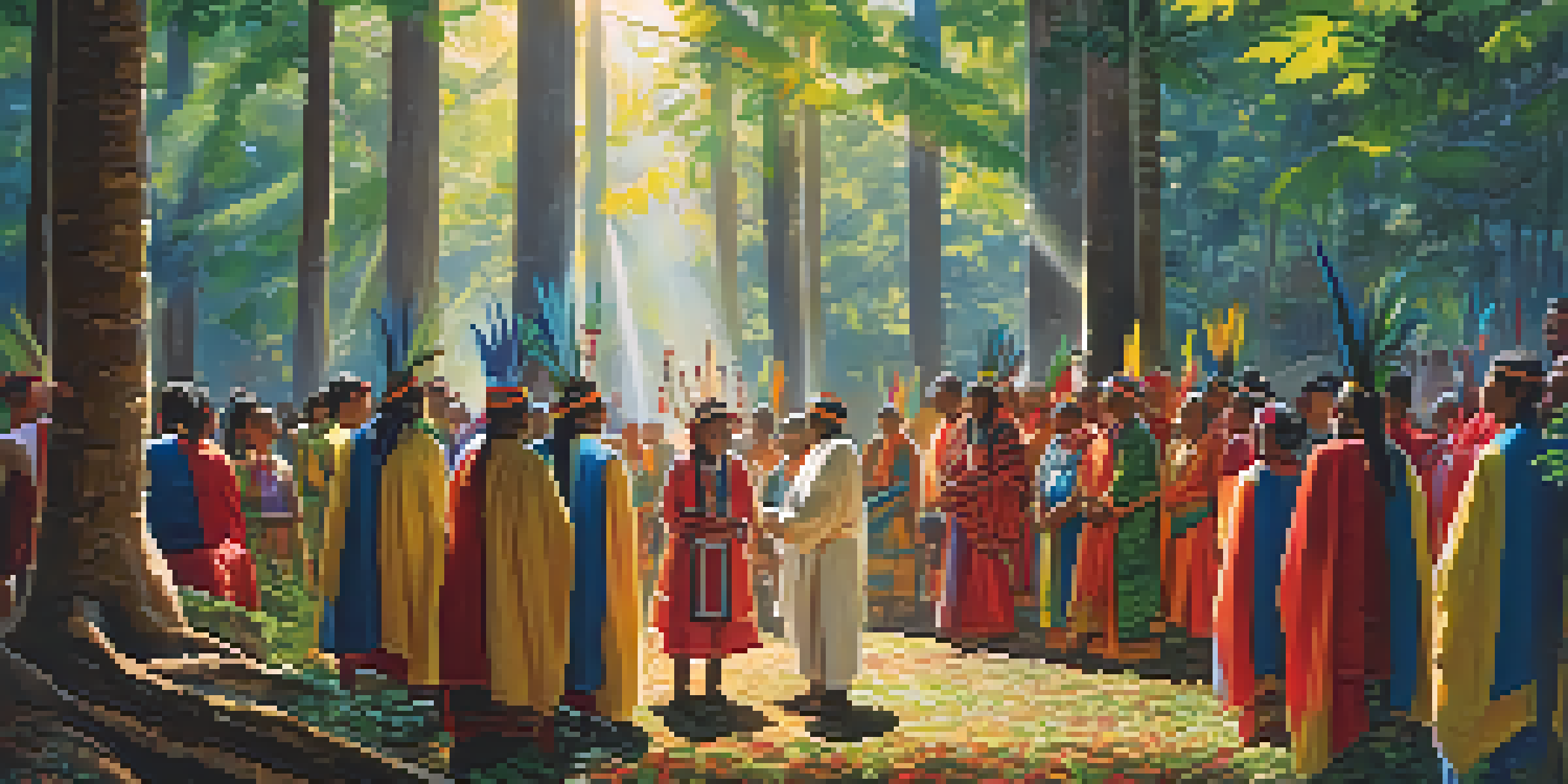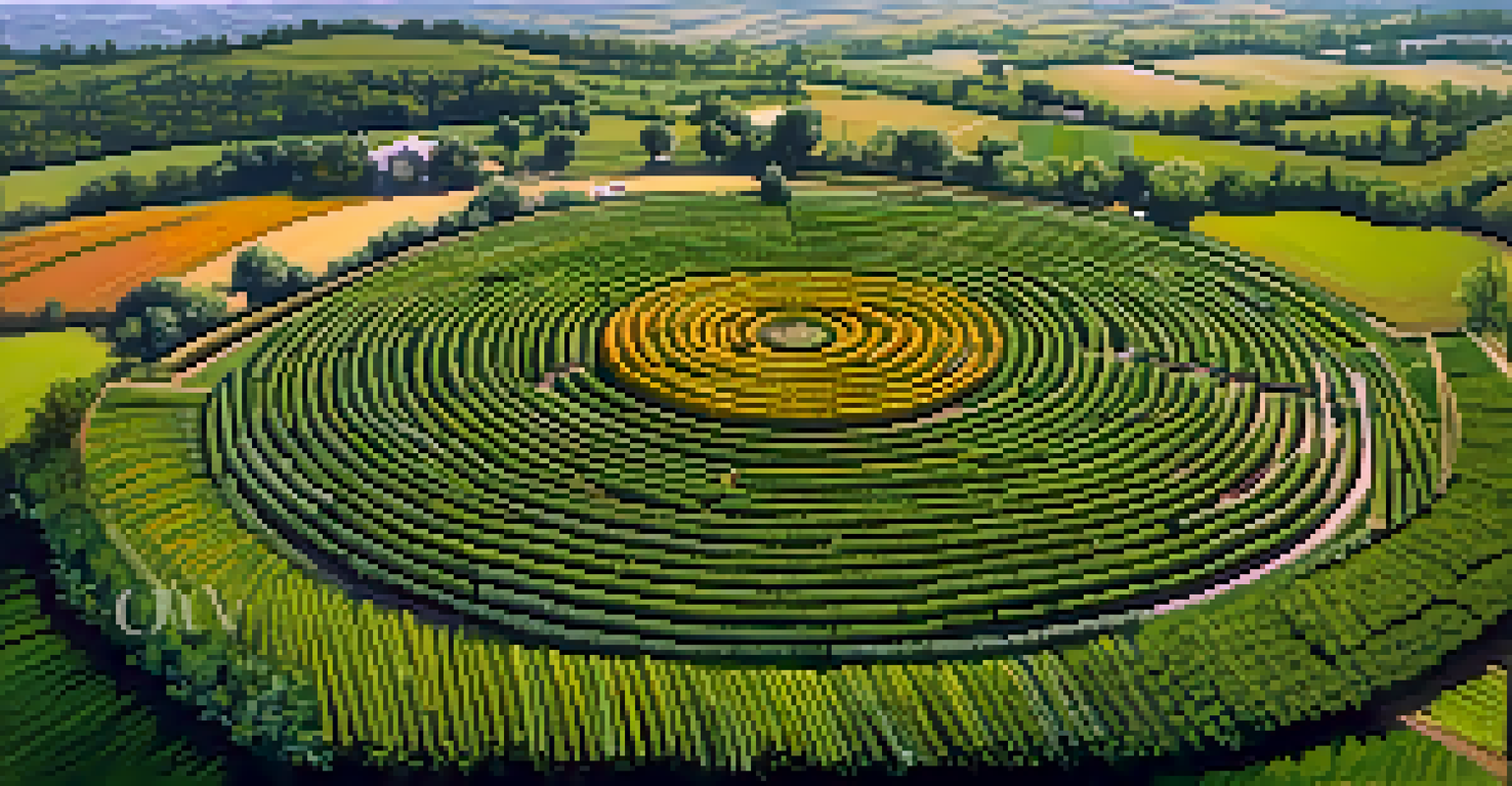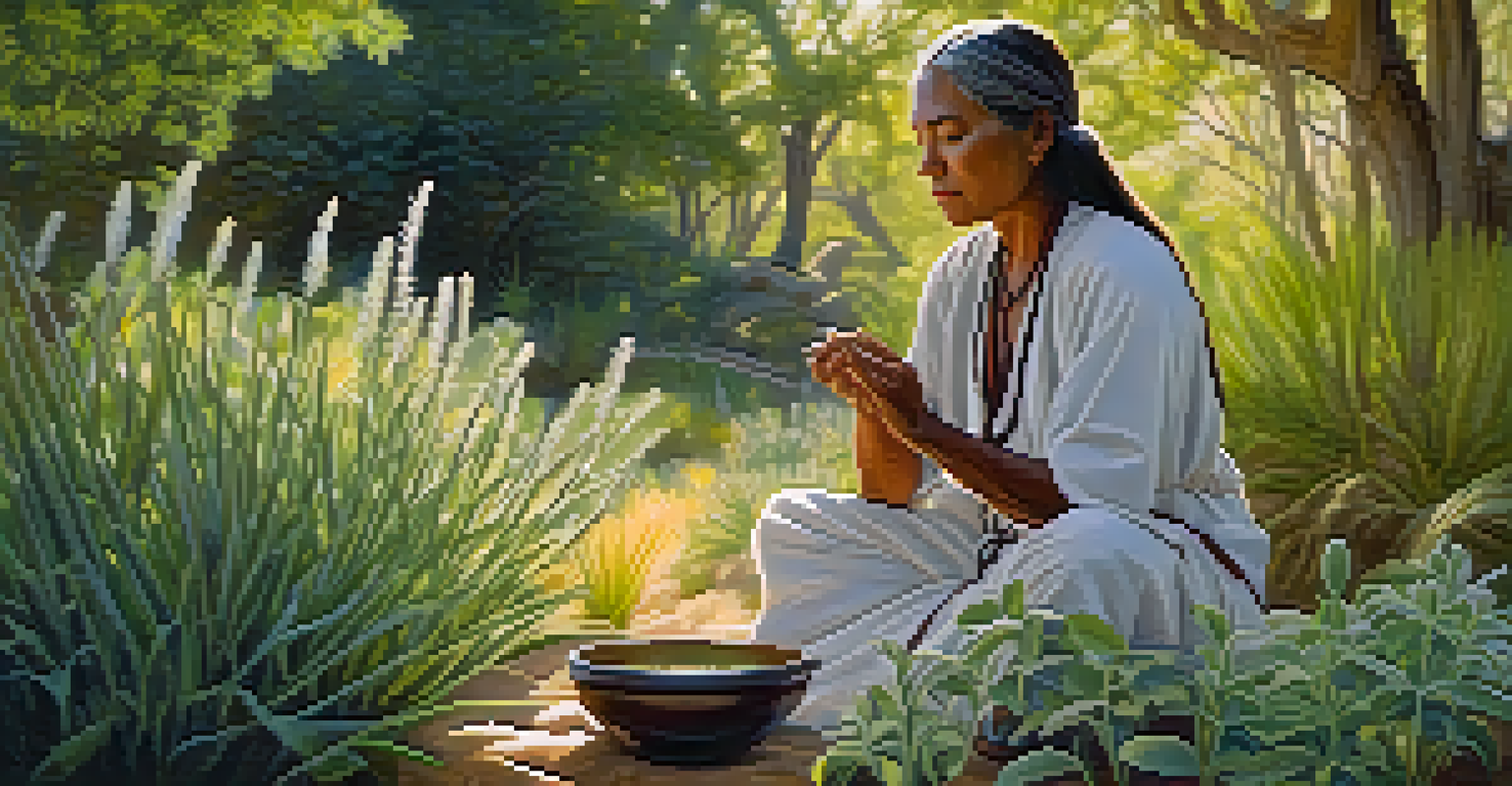Nature and Culture: Exploring Indigenous Practices in Nature

The Importance of Nature in Indigenous Cultures
For many Indigenous cultures, nature is not just a backdrop; it's a vital part of their identity. Their understanding of the natural world is often deeply intertwined with their traditions, languages, and spiritual beliefs. This connection fosters a profound respect for the environment, treating it as a living entity rather than a resource to be exploited.
The land is not a mere resource; it is a living entity that must be respected and cared for.
Indigenous peoples see themselves as stewards of the land, responsible for maintaining its health for future generations. This stewardship shapes their daily practices, from hunting and fishing to farming and foraging. For example, the seasonal movements of tribes often align with the rhythms of nature, ensuring they harvest sustainably and respect animal populations.
Moreover, this intimate relationship with nature is reflected in their art, stories, and ceremonies. Nature inspires countless Indigenous narratives that convey lessons about life, resilience, and interconnectedness. By sharing these stories, they not only preserve their culture but also impart valuable insights into sustainable living.
Traditional Ecological Knowledge (TEK)
Traditional Ecological Knowledge (TEK) encompasses the understanding and practices of Indigenous peoples regarding their local ecosystems. This knowledge is often passed down through generations, rooted in history and experience. TEK includes insights about plant growth cycles, animal behaviors, and the broader ecological relationships that govern their environments.

For instance, many Indigenous communities utilize controlled burns to manage forest health. This technique, known as 'cultural burning,' reduces wildfire risks and promotes the growth of specific plants that are crucial for both wildlife and human use. Such practices exemplify how TEK can lead to sustainable land management, benefiting both ecosystems and local communities.
Nature as Cultural Identity
Indigenous cultures view nature as an integral part of their identity, intertwining it with traditions, languages, and spiritual beliefs.
In recent years, there has been a growing recognition of the value of TEK in addressing modern environmental challenges. Collaborative efforts between Indigenous knowledge holders and scientists aim to integrate these traditional practices with contemporary ecological research. This partnership not only validates Indigenous voices but also enhances biodiversity conservation efforts.
Ceremonies and Rituals: Connecting with Nature
Ceremonies and rituals play a significant role in Indigenous cultures, often serving as a means to honor and connect with the land. These practices can be as varied as seasonal festivals, harvest ceremonies, or spiritual rites that acknowledge the natural world. Through these gatherings, communities reaffirm their relationship with nature and express gratitude for its gifts.
Indigenous peoples have a unique connection to nature, which must be recognized and integrated into contemporary environmental practices.
For example, the First Nations of North America celebrate the 'First Salmon Ceremony' to honor the salmon's return. This ritual not only marks the beginning of the fishing season but also reinforces respect for the fish, ensuring sustainable practices. Such ceremonies are rich in symbolism, reminding participants of their dependence on and responsibility toward nature.
These rituals also provide a space for storytelling and the transmission of cultural values. Elders often share teachings about the land, reinforcing the idea that nature is a teacher. By embedding these lessons in ceremonies, Indigenous cultures ensure that future generations understand their place within the ecosystem.
Indigenous Agriculture: Sustainable Practices
Indigenous agricultural practices offer valuable lessons in sustainability and resilience. Many Indigenous communities have cultivated crops for centuries, using methods that promote biodiversity and soil health. Techniques such as companion planting—growing different crops in proximity to benefit each other—are rooted in traditional knowledge that has stood the test of time.
The Three Sisters, a method practiced by various Indigenous tribes, involves planting corn, beans, and squash together. This technique not only maximizes space but also creates a symbiotic relationship among the plants. The corn provides support for the beans, the beans fix nitrogen in the soil, and the squash spreads out to block weeds, demonstrating harmony between cultivation and nature.
Traditional Ecological Knowledge
Traditional Ecological Knowledge (TEK) encompasses sustainable practices passed down through generations, showcasing valuable insights into local ecosystems.
As modern agriculture faces challenges like climate change and soil degradation, revisiting these Indigenous practices can inform sustainable farming methods. By embracing diverse approaches to agriculture, we can work towards food systems that respect the land and support ecological balance.
Healing Practices: Nature in Indigenous Medicine
Nature is a cornerstone of Indigenous healing practices, with many communities relying on local plants and herbs for medicinal purposes. This knowledge is often deeply embedded in cultural traditions, passed down through generations. Indigenous medicine emphasizes a holistic approach, considering not just physical ailments but also emotional and spiritual well-being.
For example, the use of plants like sage, sweetgrass, and cedar in healing rituals highlights the spiritual connection to nature. These plants are often burned in ceremonies to purify spaces and promote healing. The belief in the medicinal properties of these plants illustrates the profound respect Indigenous peoples have for the natural world and its capacity to heal.
Furthermore, contemporary healthcare systems are beginning to recognize the importance of integrating traditional practices alongside modern medicine. Collaborative health initiatives that honor Indigenous healing methods can lead to more effective care for Indigenous communities, showcasing the value of blending knowledge systems.
Cultural Preservation and Environmental Stewardship
Cultural preservation and environmental stewardship are inextricably linked in Indigenous communities. As they strive to maintain their traditions, they also advocate for the protection of their ancestral lands. This connection is evident in various movements aimed at preserving sacred sites and promoting sustainable land use practices.
For instance, many Indigenous groups have been at the forefront of environmental activism, fighting against projects that threaten their land and resources. Their campaigns often highlight the importance of protecting biodiversity and ensuring that ecosystems remain intact. By standing up for their rights, they also champion the health of the planet as a whole.
Sustainable Indigenous Agriculture
Indigenous agricultural practices, such as companion planting, emphasize sustainability and resilience, providing lessons for modern farming methods.
This synergy between culture and conservation underscores the idea that protecting the environment is not merely a political issue; it's a cultural imperative. By preserving their heritage, Indigenous peoples contribute to the broader narrative of environmental stewardship, reminding us all of our responsibility to care for the Earth.
The Future of Indigenous Practices in Nature
As the world faces unprecedented environmental challenges, Indigenous practices offer invaluable insights into sustainable living. Their deep-rooted relationships with nature can guide us in finding solutions to issues like climate change and biodiversity loss. Recognizing and respecting Indigenous knowledge is essential for fostering a more sustainable future.
In recent years, there has been a growing movement towards including Indigenous voices in environmental policy discussions. Collaborative approaches that blend scientific research with Indigenous wisdom are gaining traction, highlighting the importance of diverse perspectives. This shift not only empowers Indigenous communities but also enriches our understanding of ecological balance.

Ultimately, the future of Indigenous practices in nature hinges on mutual respect and collaboration. As we work together to address global challenges, integrating traditional knowledge with modern science can lead to innovative and effective solutions that honor both people and the planet.